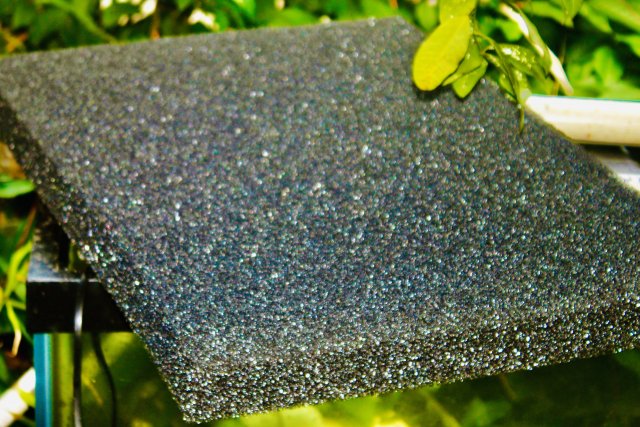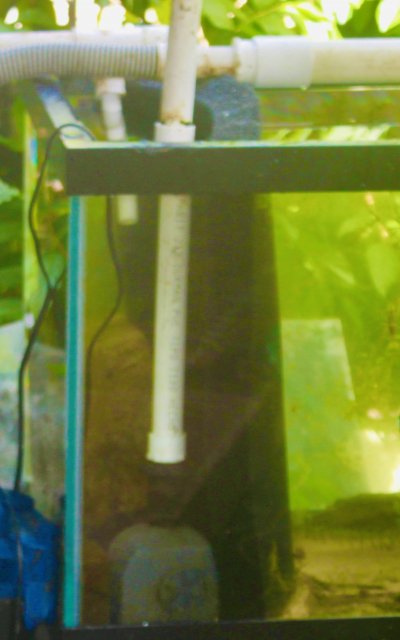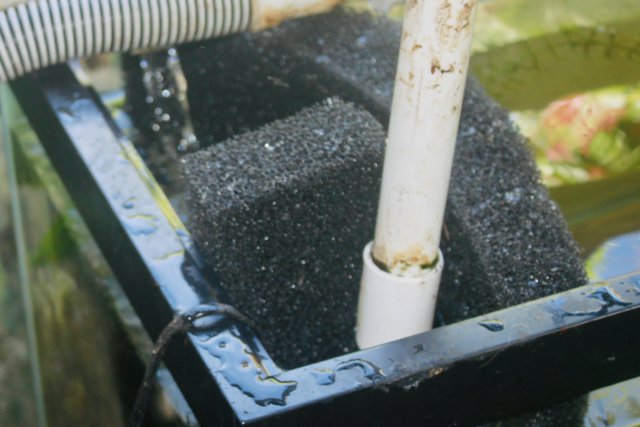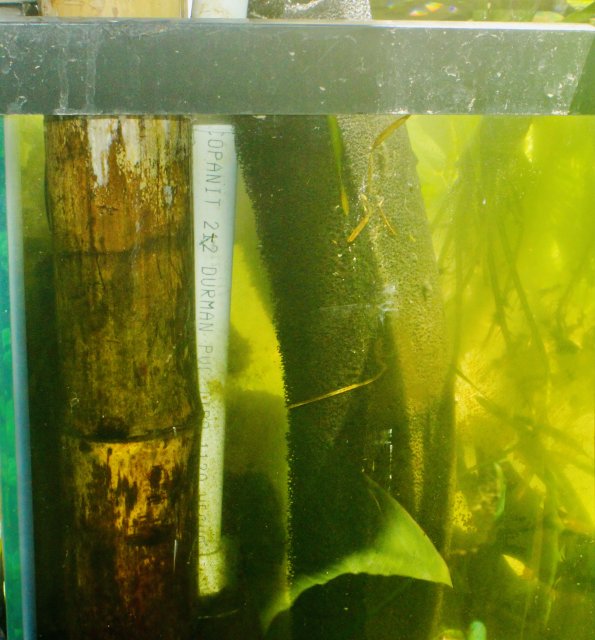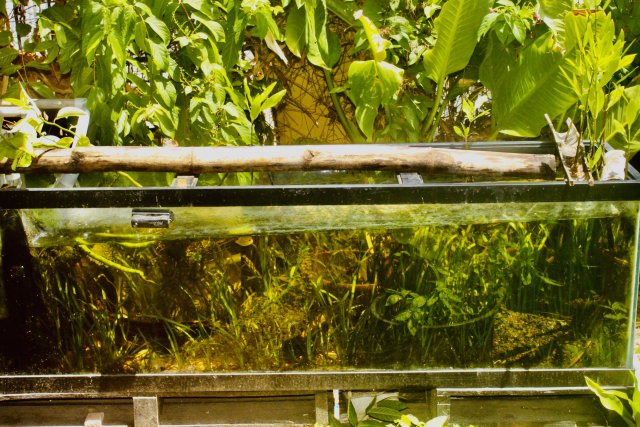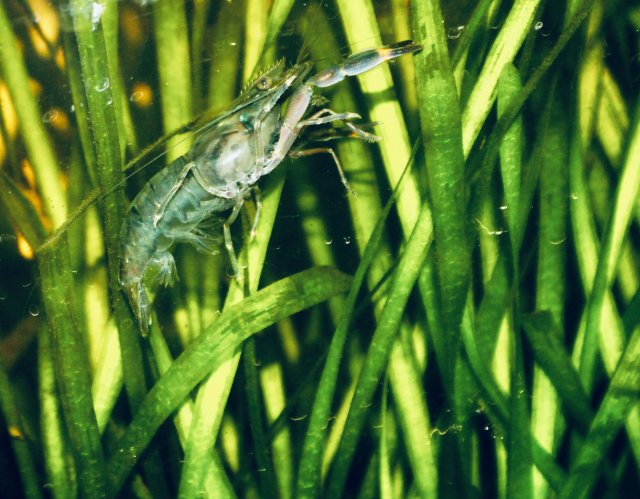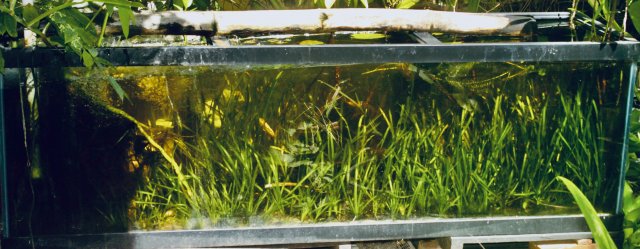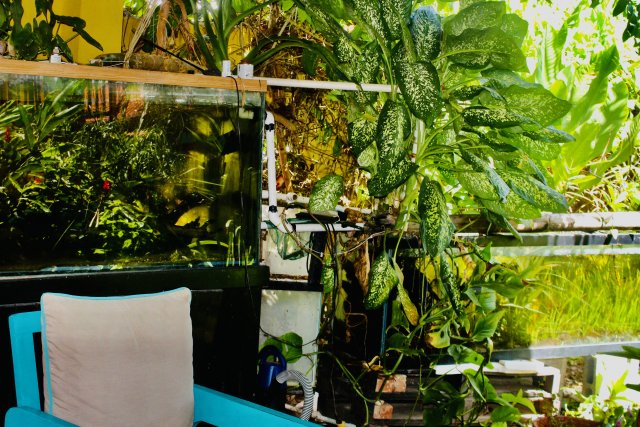John, this is what I found with jetlifters and similar:
1) Flow testing with cheap (but new) air pumps shows no difference between the jetlifter and a bare vinyl or silicone tube.
2) Both of those did much better (higher water flow) than an airstone!, but maybe only because the airstone was large enough to block the water coming past it.
3) The jetlifter has about 30 tiny holes spaced around the riser but air only comes out from a few(not lots of tiny bubbles like I expected).
4) If you have multiple holes all the way up the riser, it doesn’t make equal intake all the way up, and might even allow air to exit those holes.
5) For consistent water intake through a sponge, drill a round hole all the way through (as the swisstropicals guy does), but only put the riser part way down (equal to half the diameter of the sponge; typically about 2 inches). There also needs to be a cover on the bottom of the sponge, preventing water just coming in the hole. And NO side holes in the riser, which surprised me too.
That makes the water path through the sponge approximately the same distance from any of the surface to the center hole.
Going one at a time:
1) Why am I not surprised? I didn't believe all the hype on the ST site about jetlifters, but I assumed there would be at least some advantage. Marketing...

2) I did some half-assed test comparisons years ago and was surprised to find that as well, although the bare tube was only superior to the airstone in smaller size airlifts, nothing bigger than about 3/4 - 1 inch ID. In my 1.25 and 1.5 inch pipes the airstone was far superior; I think that's only because the column of airstone bubbles is wider and fills up the whole tube. With a bare airline, at least with smaller air volumes, I think the big bubbles just fly up the center of the big tube and allow water to slip past them and remain in the tube. I had no easy way to measure actual air volume being used, so no way to know if the airstone was more efficient per unit volume of air; honestly didn't care too much either, since I am a firm believer in an oversized central air pump so I always have air to spare.
3) Refer to #1 above. I think those unused holes are referred to as "marketing holes".

4) I wondered about that, but in the end it doesn't matter. The unit does what I wanted it to do; if the flow through various parts were uneven, then first: So what?

And second: Any inconsistency in flow through the sponge would also result in uneven clogging of the sponge, which would in turn automatically even out the flow throughout as the resistance built up higher in the areas with initially higher flow. As far as air escaping, well, that can absolutely happen and is very easy to see. All it takes to prevent it is to drill each of the holes at an upward angle from the outside of the pipe; this puts the inside of the hole higher than the outside, and prevents air escaping.
5) That is so simple and obvious; I hate that I didn't see it myself.

But...it holds true only when the height of the sponge and the diameter are roughly equal. Many of my sponge filters are over 12 inches high, and I even use the full 19-inch tall column in some of them. Going down halfway in a tall column like that is not going to equalize intake along the entire height of a 4 or 6 inch wide column sponge. I agree about the cap, not only to prevent unfiltered water flowing through but also so that you can rescue plecos, kuhli loaches and others who are psychologically incapable of seeing a hole without jamming their spiny little butts into it and refusing to back out.
Honestly, I used the interior swiss-cheesed full-length pipe in my original DIY sponge filters made from the cheap soggy foam that was and is so commonly available. The stuff was so limp and formless that it needed the rigidity of the pipe "spine" just to stand up after a short time. When I found Poret I continued with the same design because I was quite happy with it and saw no need to change. Is it the absolute epitome of efficiency? Beats me; I doubt it, but again...so what? It's more than adequate for the intended purpose. It also makes for very easy quick-cleaning of the sponge; just stand it on the grass, drop the garden hose down the centre hole, and then squeeze the foam repeatedly while the water runs out, going the opposite direction to that in which it flows during filter operation and carrying out dirt.
My design isn't
good...it's good
enough! 




